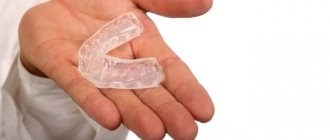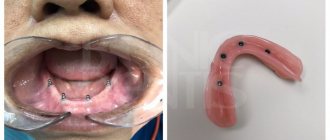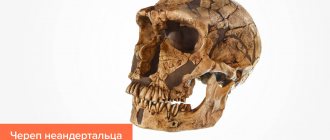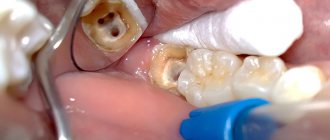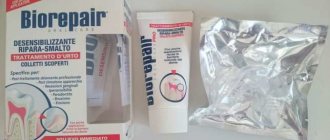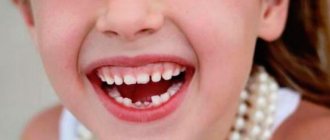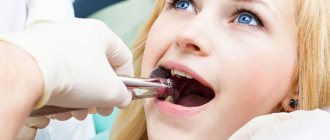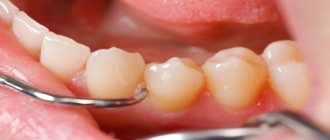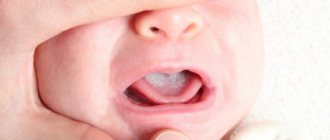This question was sent by our reader. You can also ask Lifehacker your question - if it is interesting, we will definitely answer.
Hello! Please provide information about the role of figure eight teeth (wisdom teeth). And what are the consequences or, conversely, useful of removing them? Thank you.
Ophelia Sargsyan
Maxim Vinokurov
Dentist, surgeon.
Why are wisdom teeth needed?
The role of wisdom teeth is approximately the same as that of nipples on the body of men - this is what we inherited from mother evolution. And they have no practical use today.
Of course, wisdom teeth used to have more work to do. On the fossil turtles of early Homo, you can see that they show off in the dentition on equal terms with the rest of the teeth. And this is not surprising: the food that our ancestors consumed was very rough, and chewing it required a lot of energy.
With the advent of tools and fire, food became more and more delicate. Chewing foods no longer required such muscular work. A conflict began between development programs: genetic and ontogenetic. The size and shape of teeth are determined at the DNA level, and at the moment of their formation inside the jaws, the body does not yet know what will happen to it later.
What happens is this: due to soft food, the muscles and jaws do not receive enough load and, as a result, do not grow to the size needed to fully accommodate the entire set of teeth.
And teeth, as we remember, have already been formed according to a genetic program. And they have to crowd into a limited space. Moreover, the remaining teeth have a head start: they erupt earlier.
Formation of speech sounds
If we lose even one single incisor, we can forget about our career as a newscaster. The fact is that with the help of teeth a significant group of consonant sounds is formed, which are called “dental”. These include [t], [d], [n].
There are also labiodental sounds [v] and [f], as well as a lateral consonant [l], the precise pronunciation of which is impossible without the participation of the upper jaw. It is the shape, the wrong direction of growth, or even the absence of teeth that becomes the reason for contacting a speech therapist.
Moreover, research by Japanese scientists has proven that chewing movements have a positive effect on brain function, and the degree of development of the hippocampus, the area of the temporal lobes of the brain responsible for short-term memory and information processing, directly depends on the number of teeth.
The results of a magnetic resonance imaging study of the brain, conducted in more than a thousand elderly people, showed that the fewer teeth the subjects had left, the smaller the volume of the hippocampus. Thus, the process of chewing stimulates thinking, relieves stress and improves memory.
In what cases should wisdom teeth be removed?
Depending on the location and degree of eruption, wisdom teeth can have different damaging effects.
- Even if your wisdom teeth are in a row and fully erupted, they may constantly bite or scratch your cheek.
- Any arrangement of teeth that makes hygiene difficult leads to caries. Moreover, caries hides either on the back surfaces, or, in a particularly “successful” situation, affects the tooth in front if the wisdom tooth erupted crookedly and creates a pocket between the seven and eight.
- A half-erupted wisdom tooth is fraught with periodic inflammation of the “hood” (pericoronitis) above the crown of the tooth. This happens when, for example, a piece of food gets into the space between the gum and the crown, which leads to infection. Due to the difficulty in evacuating the products of inflammation, an abscess eventually occurs.
- If the wisdom tooth is completely embedded in the bone, it can “push” the teeth in front, resulting in crowding.
- There are cases when an unerupted wisdom tooth provokes the development of an extensive jaw cyst that destroys bone tissue. As a result, when it suppurates, serious conditions arise.
In all of these cases, we consider options for removing wisdom teeth. If you do not have such problems, then perhaps you are lucky and do not need to delete them.
Why does Russia need teeth?
Author Editorial Board Pravda.Ru
28.09.2004 19:05
Health » Dentistry » Prevention
A Pravda.Ru correspondent attended the opening of the Moscow Month of Healthy Teeth, held as part of the all-Russian campaign “Clean Like Me.” Last Sunday in Moscow at the All-Russian Exhibition Center (formerly VDNKh), between the “Friendship of Peoples” and “Stone Flower” fountains, crowds of people... were cleaning teeth. Brushes, toothpastes, napkins - all the most modern. And the whole procedure is strictly according to science. The journalists giggled, and then at the press conference they were surprised at the elementary things that the experts were talking about from the podium. Officially it was called the Dentist Parade.
Toothless families
According to dentists, 92% of Russians do not know how to brush their teeth. As a result, almost the entire adult population suffers from dental caries. We have somehow naturally formed a stereotype: a mouth full of crowns by the age of 40, and by the age of 50-60 false jaws are the norm. But in countries where people are taught to take care of their oral cavity in a timely manner, the situation is different. In Finland and Sweden, for example, three quarters of those over 70 have mostly natural teeth rather than dentures.
Toothlessness is the most obvious, but far from the only result of the inability to brush your teeth. Many diseases of the digestive system originate in an unkempt mouth. Due to the fact that pathogenic microorganisms flourish in it, the body is poisoned, a person’s immunity sharply decreases, and this is a direct path to the most diverse and numerous ailments.
Hygienic lack of culture in relation to the oral cavity is passed on in families from generation to generation - the child, like a monkey, repeats what the parents do. They don't use toothpaste regularly - and he follows suit. They brush their teeth incorrectly - and he will repeat the same incorrect movements all his life. Not only that, no one will ever correct him. In Russia, not everyone knows that you should start brushing your teeth when your baby’s first tooth appears.
Note to dentists
Have you often met with a doctor who, when you came to him to fill a “hollow”, decided to find out in detail how you care for your teeth and suggest something?.. Same thing. For the most part, Russian dentists believe that their only concern is to treat, and let them deal with prevention... Who? Mom and dad, who themselves “have no idea”? State? But, alas, there is no preventive state program for dentistry in Russia, unlike the aforementioned Sweden.
Therefore, together with the famous St. Petersburg dentist, Professor Sergei Ulitovsky, speaking on behalf of his colleagues, we must certainly say “thank you.” This largest manufacturer of toothbrushes, pastes, floss, rinses and other oral care products is conducting a large-scale educational program “Brush Like Me” in Russia, timed to coincide with the beginning of the new school year.
Actually, the events at the All-Russian Exhibition Center, with the description of which this article began, are one of the simplest events organized by the Oral-B concern.
As part of this project, mini-training centers were organized in September. They are created on the basis of large stores, pharmacies and dental clinics. And there, highly qualified dentists provide (free of charge, of course) complete and up-to-date information on oral hygiene, recommendations on dental care, choosing a brush and other hygiene products that are most suitable for you.
At the same time, dentists conduct special lessons in schools. The Oral-B promotion applies to 17 cities in Russia. Among them are not only Moscow, St. Petersburg and Nizhny Novgorod. Here are Novosibirsk, Omsk, Yekaterinburg, Krasnoyarsk, Kazan, Chelyabinsk, Rostov, Khabarovsk, Vladivostok, Samara, Voronezh, Krasnodar, Saratov and Volgograd.
Edison toothbrush
For those who do not have the opportunity to obtain first-hand information, we will briefly list the rules of what to pay attention to when caring for the oral cavity.
The main enemy of teeth and gums is dental plaque, which is a colorless film of bacterial waste products. The most effective tool for removing it is a toothbrush, and not toothpaste, as many people mistakenly believe. It should have bristles either of different lengths or located at an angle to each other. This configuration allows for gentle massage and stimulation of the gums, as well as successfully sweeping away plaque from the interdental spaces and adjacent gums.
When using a regular brush, these difficult areas cannot be properly treated, and as a result, caries occurs.
The inner and outer surfaces of the teeth should be brushed in a circular motion. The newer the brush, the better. It has been clinically proven that a new brush removes up to 30% more plaque than one that has been used for 3 months. Thus, Oral-B is very proud of its development - blue “indicator” bristles, which, when discolored, signal the need to replace the toothbrush. For her, the company received the Edison Prize.
Half a meter of thin thread
An auxiliary tool, but also necessary, especially if your toothbrush does not have multi-level bristles, is dental floss. With its help, hard-to-reach tooth surfaces and interdental spaces are cleaned. Dental floss is still not very common in our country, so here’s a little more about how to use it.
You need to take about 50 cm of thread and wrap its ends around your middle fingers. Then, using your thumbs, carefully insert the floss between the upper teeth and under the edge of the gum. Plaque is removed using up and down movements, moving the floss around each tooth. The teeth of the lower jaw are cleaned in the same way, only it is more convenient to insert the floss between the teeth with your index fingers. A new section of floss is used for each tooth.
Golden spoons of the royal family
It is advisable to include in your oral care arsenal a rinse and another unusual thing for many - a device for cleaning the tongue, on which toxins also accumulate. A toothbrush can be used as such a device, but it must be soft and have rounded ends.
However, plaque from the tongue can be cleaned the same way as our ancestors did - with a silver spoon. Interestingly, in the Pavlovsk Palace, among the jewelry that belonged to the imperial family, gold tongue scrapers are displayed. How and why this hygienic technique was lost in our country remains a mystery. But sometimes such an unpleasant thing as bad breath is associated with a coating on the tongue. Brushing your teeth with toothpaste should last at least 2 minutes. Another 2-3 minutes will have to be devoted to flossing, tongue cleaner and rinsing.
Most people probably know that you need to brush your teeth morning and evening...
Zoya Alexandrova
Pharmacy topics
Discuss
What are the risks of removing wisdom teeth?
The first consequence of unsuccessful tooth extraction is infection of the socket. During the healing process of a wound, an infection can get there, and a fresh blood clot is one of the most favorite delicacies for bacteria. In mild cases, the process is limited to a hole, in severe cases it develops into an abscess or phlegmon, and this is already serious.
The next trouble is loss of sensitivity along the mandibular nerve. This happens if it was damaged during removal. The reason may be either careless work of the surgeon or an unfavorable location of the roots relative to the mandibular canal.
Well, the most discouraging complication is a broken jaw. Either the doctor applied excessive force when removing it, or the bone itself is affected by an ailment that worsens its properties.
In conclusion: choose your dentist carefully and visit him twice a year. Also, follow the advice of specialists and do not try to remove wisdom teeth yourself.
Appearance
To understand why a wisdom tooth is needed, it is worth understanding when it appears and in whom. We know that an adult has 32 teeth, but only 28 teeth take part in the process of chewing food. This means that this process does not require the 4 teeth that are located at the edges of the upper and lower jaw, that is, the wisdom teeth. They appear much later than other teeth, from about 16 to 26 years. They got their popular name because of the symbolic “wisdom” that a person acquires when entering adulthood. Although it is clear that “adult” does not yet mean “conscious”, “reasonable” and “wise”. The appearance of wisdom teeth can cause a number of oral problems. It is also worth noting that the emergence process may take several years.
Kinds
What are the units? Teeth in the oral cavity are divided into 4 types: incisors, canines, molars and premolars. The human jaw is symmetrical and each part (right and left) has the same number of elements. If this does not happen, then they talk about malocclusion development, which requires immediate correction.
Incisors
Incisors are the elements located in the center of the jaw. There are 8 such units in total - 4 at the bottom and 4 at the top. The peculiarity of the anatomy of the incisors is that they have a flat crown with a sharp cutting surface. There are 3 tubercles on the cuts of the incisors, which wear off over time. The centrally located elements are usually larger than the lateral incisors, since they bear more load when chewing food.
The upper central teeth are most susceptible to damage in the form of cracks in the enamel and chips. It is in these areas that aesthetic defects associated with improper placement of elements in the oral cavity and trema are usually noted.
Crown – part of the tooth protruding above the gum
It should be noted the main functions of the incisors are the primary capture of food, cutting pieces and chewing them. The central elements are the first to begin to chop the food and pass it further. Due to the sharp cutting edge, units and twos crumble and crush food for further normal absorption. The incisors protect the remaining elements from severe damage during chewing loads. In addition, they protect the digestive organs from the development of chronic diseases associated with insufficient absorption of nutrients by the intestines.
On the upper jaw, the units have impressive dimensions - up to 23 mm including the root system. Unit width is from 4 to 6 mm. Thanks to the flat crown, the chewing load is distributed evenly between all areas of the tooth. The thinnest enamel of the incisors is in the area of contact with the gum. It is this part that is most vulnerable to carious processes.
Several features of incisors should be noted:
- rounded root shape;
- the presence of grooves on the surface of the root;
- chisel shape;
- greater curvature of the incisors located on the sides.
Formation
The formation of the dental system begins in the womb at 6 weeks. At this time, the fetus has formations inside the jaw bone - the rudiments of teeth. Before birth and for some time after it, these are relatively soft formations; during growing up, they become strengthened and saturated with minerals. The enamel and inner part harden, but strengthening continues for some time after eruption.
Children's first teeth do not have roots. Their loss is due to the growth of the root set, which displaces the milk set. Newly erupted permanent teeth have weak enamel, poorly saturated with mineral compounds. Therefore, during the period of molar growth, the child must maintain oral hygiene, due to the high risk of developing caries. At this time, the enamel is vulnerable to acids.
Structure of teeth
A tooth consists of an apex (crown), a neck, and a root (or roots). A crown is a section of a tooth that, after eruption, protrudes completely or partially above the gum. At the crown, doctors distinguish the surface of occlusion (closing), vestibular (facial), lingual (lingual) and approximal (contact) surfaces. The roots of the teeth are located in the alveolar sockets - depressions in the jaw. Incisors, canines, first premolars and second premolars have one root, and two roots extend from the first premolars of the upper jaw and from the molars of the lower jaw. The maxillary molars have three roots. The tooth root is held in the alveolus by the periodontium, formed by the fusion of bundles of collagen fibers.
Each tooth is covered on top with enamel, the hardest tissue in the human body. The enamel of a newly erupted tooth is protected by the cuticle - a thin but very durable film. Over time, the cuticle is replaced by pellicle (a derivative of saliva).
Beneath the enamel layer is dentin, the foundation of the tooth. In the root zone, dentin is penetrated by collagen fibers and covered with cement. The periodontium is attached to cement impregnated with mineral salts.
The space inside the tooth is filled with dental pulp, a soft, loose connective tissue. The internal space of the tooth is divided into the root canal and the crown cavity. The pulp is penetrated by nerve fibers, blood and lymphatic vessels, which in the roots break up into separate small branches. With caries, the tooth hurts precisely because of the presence of a huge number of nerve endings in the pulp.
